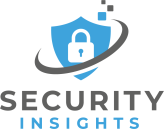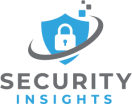
Businesses and customers are increasingly concerned about cybersecurity and data protection, necessitating the implementation of the highest information security requirements. Obtaining ISO/IEC 27001 compliance shows your customers that you have a solid ISMS in place and are continually working to protect all of your company’s data.
The International Organization for Standardization (ISO) is committed to assisting global businesses by producing standards based on input from subject matter experts worldwide. The ISO/IEC 27001 standard establishes a framework for a company’s Information Security Management System (ISMS). The newest revision ISO/IEC 27001 is part of the ISO 27000 family of standards for information security management and was initially published by both the ISO/IEC and the International Electrotechnical Commission (IEC).
What is ISO/IEC 27001?
Though there are more than a dozen standards in the ISO 27000 family, ISO/IEC 27001 is the most well-known, establishing specifications for an information security management system (ISMS). They allow any firm to manage the security of assets such as financial data, intellectual property, employee information, and information provided by third parties.
Many large organizations use the ISO/IEC 27001 standard to demonstrate compliance with laws and regulations. It is also used by smaller businesses to ensure that their data is secure from theft or misuse.
An ISMS includes all the policies, procedures, processes, and controls needed to protect an organization’s assets from internal and external threats. An ISMS can be used with other standards such as ISO 9001, ISO 14001 and ISO 22000 to help companies improve their performance in quality assurance, environmental protection, and food safety.
History of ISO/IEC 27001
It’s a version of ISO/IEC 27001 that dates back to 1995 is BSI-7799, and then published by the British Standard Institution. As a result of several changes, the DTI originally wrote it, and ISO evolved it into an internationally recognized, best-practice information security standard in the ISO/IEC 27000 series to assist organizations in safeguarding intellectual property and information assets.
Currently, the international standard ISO/IEC 27001:2013 contains revisions made in 2017.
Why does ISO/IEC 27001 Compliance Matter?
It is possible for companies to acquire and maintain ISO/IEC 27001 compliance in order to demonstrate that they have established appropriate security controls and processes to safeguard their systems and sensitive data.
Meeting ISO/IEC 27001 provides a competitive advantage and a solid foundation for complying with other regulatory requirements and standards. Companies that comply with ISO/IEC 27001 are likely to be more secure than those that do not. The standard also provides a good framework for implementing a number of security controls mandated by other regulations.
It is the primary purpose of ISO/IEC 27001 regulation to assist enterprises in developing, implementing, and enforcing ISMSs. An ISMS outlines the controls, processes, and procedures in place at the company for protecting its confidential, privileged, and sensitive information.
Certification to ISO/IEC 27001
If you’re familiar with ISO/IEC management system standards, you’re presumably aware that certification is optional (though encouraged in some situations). Some businesses want to get ISO/IEC 27001 certified to take advantage of the certification’s best practices.
A successful ISMS entails a systematic response to new threats, allowing it to develop and change in tandem with your company. Your ISMS must cover every information asset, and you’ll need to execute checks whenever a new device or data set is introduced.
To maintain your ISMS, ISO/IEC standards require using a Plan-Do-Check-Act model. The ISO/IEC 27001 standard will provide you with the framework for developing your method:
- Plan: To assess threats and define controls, create an ISMS workflow.
- Do: Carry out the plan.
- Check: Evaluate the effectiveness of the implementation.
- Act: Make any necessary improvements to your program’s efficacy.
One of the most important aspects of the ISMS is that you are only taught a method. The ISO 27001 accreditation will provide you with a starting point for keeping your business secure. You can, however, add to that as you see fit. To meet other objectives, some practitioners will overlay a Six Sigma DMAIC technique on top of it.
On the other hand, others decide that certification will give their customers and clients more peace of mind. However, keep in mind that ISO does not require or impose certification.
As you can see, there are numerous advantages to adhering to ISO/IEC 27001 standards. Whatever your company’s objectives are, adhering to these compliance considerations is a wise decision that will benefit you in the short and long run. However, one of the difficulties in meeting the requirements is the intricacy of organizing your software.
Is ISO/IEC 27001 Certification or Compliance Must?
The answer is simple: no. While some people confuse ISO 27001 compliance with legal obligations, few nations have laws forcing businesses to follow the standard. Of course, nothing in life is so straightforward, and your company may be compelled to get an ISO 27001 certification in some circumstances. Contracts and vendor procurement practices, especially in sensitive areas like healthcare and banking, require ISO/IEC 27001 compliance. There are some market segments where ISO 27001 accreditation is expected, even if it is not legally required.
Why Should Companies Certify ISO/IEC 27001?
The ISO/IEC 27001 certification assures your customers that you are taking security seriously. It is also proof that your data protection policies and procedures meet the international standard requirements.
The ISO/IEC 27001 certification is a standard for security management systems (SMS) that provides guidelines on managing information security risks. It was developed by the International Organization for Standardization (ISO) and published in 2001. The ISO 27001:2013 revision of the standard was approved in February 2013, replacing the 2008 version of ISO 27001.
ISO/IEC 27001 is the world’s most widely implemented information security management standard. It provides a framework to help organizations better manage their information security risks. Organizations that adopt ISO 27001 gain numerous benefits, including:
- Improved reputation – ISO/IEC 27001 certification shows your customers that you take information security seriously and have invested in the right processes and controls to protect their data.
- A competitive advantage – ISO/IEC 27001 certification can help your organization stand out from competitors by demonstrating that its information security risk management process is effective and up-to-date with today’s cyber threats.
- Reduced business risk – Having a documented information security management system in place can help reduce the risk of incidents occurring and limit the impact if they do occur. This means less downtime for employees and less money lost through fines or damages claims.
- Increased productivity – An ISO 27001 certified company can increase productivity by better protecting its information assets against business interruptions due to cyber attacks or physical disasters such as fire, flood, or earthquake damage to infrastructure or buildings.
How to Get an ISO/IEC 27001 Certification?
ISO 27001:2013 is the most recent version of this certification. Before you apply, familiarize yourself with the program’s requirements and assess your company’s cyber security management approach.
The International Organization for Standardization (ISO) develops standards. However, it is not the source of certification for businesses. Instead, third-party groups are tasked with reviewing businesses and determining whether or not their ISO/IEC 27001 compliance is enough.
When deciding who to deal with to obtain an ISO 27001 certification, you can look into their accreditation to see whether they have it, but ultimately, it boils down to the company’s experience in your business.
How Long Does ISO/IEC 27001 Certification Last?
The certification is valid for three years after it is obtained. However, the ISMS will need to be controlled and maintained during that time. While the certification is valid, CB auditors will continue to undertake monitoring visits every year.
What Important Points does ISO/IEC 27001 Check?
The ISO/IEC 27001 standard is a risk-based information security management (ISMS) standard that specifies requirements for establishing, implementing, operating, monitoring and reviewing the effectiveness of an ISMS. It applies to all organizations, regardless of their size or type of activity. The standard was created by the International Organization for Standardization (ISO) and the International Electrotechnical Commission (IEC).
The most important points that ISO/IEC 27001 checks include:
- Identify and assess risks: An effective ISMS must be able to identify and assess risks based on its organization’s objectives and activities.
- Information security policy: This policy describes how an organization will implement appropriate controls to ensure that its information assets are protected from unauthorized access or disclosure.
- Information security objectives: These objectives describe how an organization intends to protect its information assets within specific areas such as confidentiality, integrity, and availability.
- Roles and responsibilities: This section defines who has what role concerning information security within an organization. For example, it may state that only board members should have access to certain types of data; or maybe it states that only certain people can approve changes to user accounts or passwords.
Final Words: Is ISO/IEC 27001 Certification Right for You?
If you require proof or assurance that your most valuable asset is safeguarded from misuse, corruption, or loss, ISO/IEC 27001 certification is perfect for you and your company. ISO/IEC 27001 accreditation is a perfect choice if you want to secure confidential information, comply with industry standards, safely communicate information, or manage and mitigate risk exposure.

